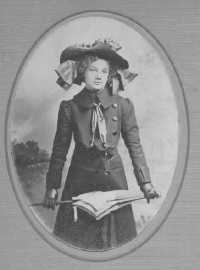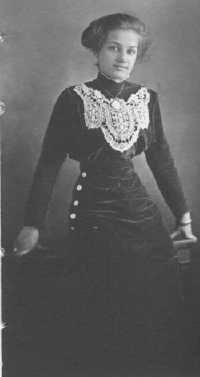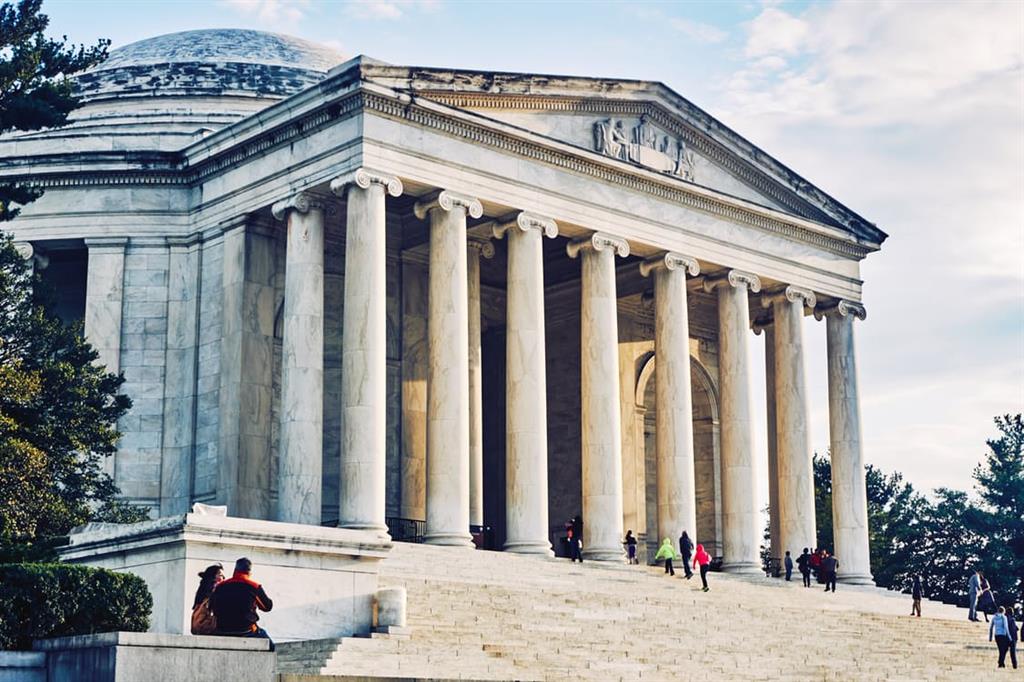 |
 |
| Figure 1 | Figure 2 |
Janie Martin Whitty submitted two photographs she thinks are her great-grandmother and her grandmother, but she isn’t certain. Since neither image has identifying information on the back, she can’t decide who they are. She asked for assistance dating their clothing so she can determine if they were taken in the late 19th or early 20th century.
The first photograph (Figure 1) is of a young girl in her pre-teen years wearing a hat, carrying a parasol and wearing a coat with her hair in ribbons. The hair ribbons indicate she is a pre-teen because a young woman would likely wear a single ribbon in her hair at the back of her head instead of tying up pony tails or braids in silk ribbons on each side of her head. Her hat is very stylish circa 1910 when oversized hats made a fashion statement. The clothing clues of hair ribbons, hat style and fitted coat all date the photograph to circa 1910. Janie’s grandmother, who was born Dec. 28, 1898, would be about 12 years old in this portrait. This photograph, which features a backdrop painted with a landscape scene, was probably taken at the spur of the moment as she passed by a photo studio. It appears spontaneous because she didn’t remove any of her outer wear for the portrait. She is still wearing gloves, a coat and her hat.
The second image (Figure 2) that Janie thought might be her great-grandmother (born Feb. 14, 1870) is actually another picture of her grandmother taken circa 1915. The clues for identification purposes are the identical facial features present in both pictures. The only differences are that the girl in Figure 1 is now wearing her hair up and is dressed in clothing styles intended for women rather than children and teens. Certain transitional events such as attaining a particular age and beginning monthly cycles usually meant that girls could wear their hair up and dress like a young woman.
Part of every young woman’s wardrobe was a corset that cinched the waist to waif-like proportions. Corrine Evans Martin, Janie’s grandmother, certainly wore a special undergarment in her formal portrait (Figure 2). This is evident from the size of her waist and the close-fitting style of the skirt. After World War I, women’s undergarments changed to the loose fitting styles of the 1920s with their boyish look. Read about what women wore underneath their clothing in Beatrice Fontanel’s Support and Seduction: A History of Corsets and Bras (Abradale Press, $19.98).
Part of Janie’s confusion over dating the images was due to the strong resemblance between mother and daughter. If you would like to see other unidentified photographs from Janie’s family album, stop by her Web site at ohioheritage.tripod.com/ohioheritagephotoalbum. You might be able to help her if you have lines related to the Martin or Evans family.
Find out how to submit your own picture for possible analysis by Maureen Taylor. E-mail her at mtaylor@taylorandstrong.com.




